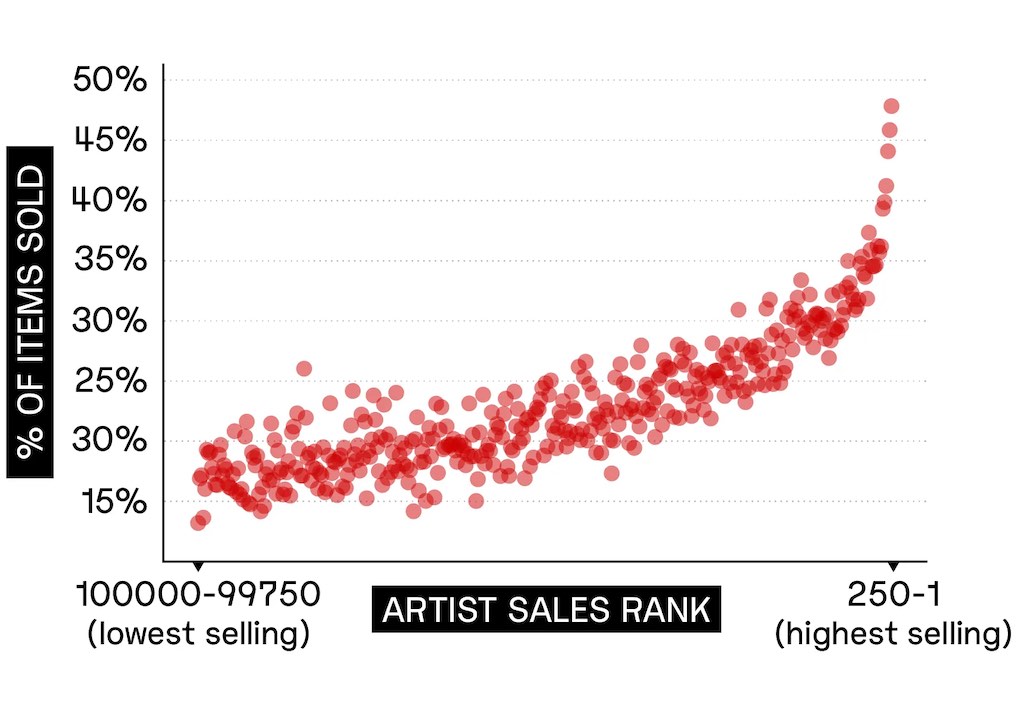Why Physical Product Sales Matter More Than Ever for Artists
If you’re an artist in your 30s, you remember the days of the physical products. The older you are, the more types of these your remember, from vinyl, to cassette, to the CD, and the many failed music distribution products in-between (digital cassette, DAT, mini-disc, SACD are just a few). For artists and record labels alike, this was a golden age of revenue that was brutally disrupted by digital music – first by downloads and then by streaming. The problem was that the major labels dropped all forms of physical product sales like a hot potato in favor of streaming, and that appears to be a problem for them in the future.

An excellent study by Components of artists leaning into physical products has found that the ones that do are far more successful than the ones that rely only on streaming, and that’s a canary in the coal mine for not only labels, but streaming platforms as well.
The Limitations of Streaming Revenue
Streaming platforms operate on a market-share payout system (it looks like a per-stream count when averaged), which, while beneficial for mega-artists racking up millions of streams, leaves smaller, independent artists struggling to generate significant income. The fractions of a cent paid per stream means that an artist would need hundreds of thousands, if not millions, of streams to make the same amount they could from selling a single physical album. This disparity has led many artists to seek alternative revenue sources, and it’s no surprise that physical products are leading the sales charge.
What’s The Attraction?
The question is, why do fans want to buy physical music products like vinyl records, CDs, and even cassettes, in the first place? It’s becoming more and more apparent that this resurgence is driven by fans’ desire for a tangible connection to an artist and their music. Physical products offer a sense of ownership and engagement that digital streaming can’t replicate, no matter how compelling the music is. Moreover, artist merchandise, from t-shirts to posters, has become a significant part of the fan experience, further driving physical product sales.
Physical product sales have become a lifeline for artists in an industry dominated by streaming. The revenue from selling a single vinyl record or a piece of merchandise can far exceed that from thousands of streams. Artists like Taylor Swift and Billie Eilish have leveraged this, offering exclusive vinyl editions and extensive merchandise lines. These physical sales not only generate significant revenue but also strengthen the connection between the artist and their fans. What’s more, it’s been found that the more artists rely on streaming music, the worse they do financially.
The Effect On Streaming
But this goes a step further. If you look at all the streaming services, almost all are losing money (we don’t know exactly how much with Apple Music and YouTube Music because their parent companies don’t break them out on their balance sheets). There is one exception though, and that’s Bandcamp.
The previously mentioned Components report looked at over 47 million transactions on the platform involving more than 5 million products and found that if you want success in the music business today you need to sell physical products. Because Bandcamp allows artists to sell physical product on the platform, it’s now the only service that actually makes money.
This affects record labels too. Labels are usually first to jump on a new technology, but also first to jump off. Take vinyl for instance. As soon as cassettes became a big seller the labels began to convert their pressing plants into cassette duplicators. As soon as the CD started to sell, they turned completely to CD replication and vinyl pressers and cassette duplicators were nowhere in sight. When digital downloads became the new thing, all the labels sold off their CD plants, which even if the sales were far less than before, were still a big revenue generator.
Today we find that artists have no trouble making physical products on their own, and the labels have no means to participate in many cases. Even if they do, their part of the deal is far less than when they owned manufacturing plants themselves. Likewise, streaming services are stuck in a business that isn’t generating profits with growth with growth rapidly slowing.
For once, artists have the right strategy – if they embrace physical products.


